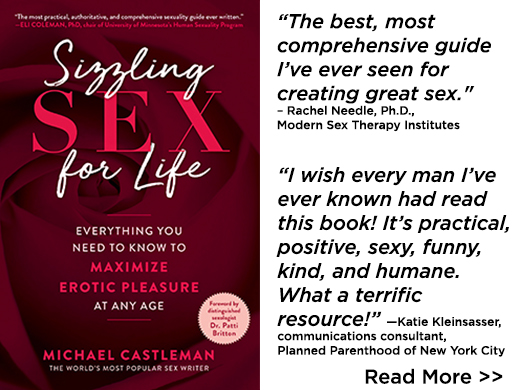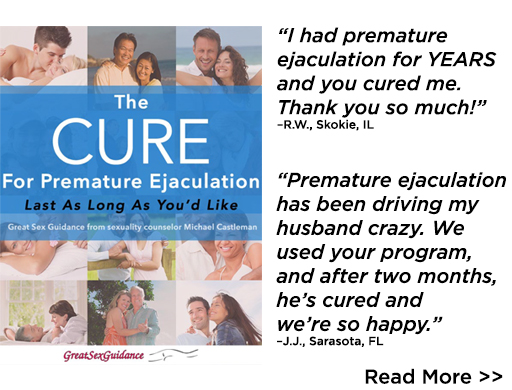
Since the 1998 introduction of Viagra, “impotence” has become “erectile dysfunction” (ED), and the condition has emerged from behind closed bedroom doors into the light of public discussion. Unfortunately, many pill-loving Americans think “vitamin V” or one of the other erection medications is all there is to treating it. These drugs certainly have a place in ED therapy, but other approaches—notably exercise, stress management, and sex therapy—are also effective, and studies show that the drugs work best when these other approaches are part of the treatment program.
No studies have specifically investigated yoga for prevention or treatment of ED, but considerable research suggests that the physical and emotional benefits of sun salutes and other poses might help something else salute as well.
Erection Explained
Erection involves both the nervous and cardiovascular (heart and blood vessels) systems. It begins with relaxation, says Louanne Weston, Ph.D., a sex therapist in Fair Oaks, California, which allows blood to remain in the central body and available to the penis, instead of being directed to the arms and legs, which happens when men are stressed (the fight-or-flight reflex). As relaxation becomes sexual arousal, nerve impulses relax the smooth muscle tissue surrounding the arteries that carry blood into the penis. These arteries open (dilate), and extra blood flows into the organ, causing erection. (Erection drugs work by dilating the penile arteries.)
Anything that increases anxiety or stress may contribute to ED by interfering with the relaxation fundamental to erection. Yoga is deeply relaxing. In a recent Indian study, researchers assessed anxiety levels in 50 medical students, who subsequently began practicing yoga. Their anxiety levels decreased significantly. “Stress contributes to many erection problems,” says Palo Alto sex therapist Marty Klein, Ph.D, who recommends yoga to his clients. “Yoga reduces stress, so it helps prevent and treat ED.”
Anything that damages the arteries or interferes with penile blood flow may also contribute to ED. No wonder that risk factors include: high blood pressure, high cholesterol, heart disease, and diabetes, all of which damage the arteries and reduce blood flow around the body, including into the penis. Obesity and a sedentary lifestyle also increase risk of ED. They are closely linked to the risk factors just mentioned. All these conditions also become more prevalent as men age. Aging is another major risk factor for ED. A recent Australian study showed ED increasing from 3 percent of men in their forties to 64 percent of men in their 70s.
Aging can’t be prevented, but the cardiovascular risk factors for ED can be minimized through exercise. Not surprisingly, exercise has been shown to help prevent and treat ED. In one study, University of California, San Diego, researchers worked with 78 sedentary men, average age, 48. Some took up walking at a nonbrisk, strolling pace. Others enrolled in a vigorous exercise class. After nine months, the strollers reported increased ED, but those in the exercise class reported less ED and greater sexual satisfaction.
Yoga can be vigorous exercise. Several studies have shown that yoga is particularly beneficial for ED risk factors. Recently, Indian researchers urged 42 men with angina (heart disease that causes chest pain on exertion) to eat a heart-healthy diet. Some also began practicing yoga. A year later, compared with controls, the yoga group had significantly fewer angina attacks, lower cholesterol, and lost more weight. Similar studies show that yoga helps treat diabetes and high blood pressure. “I know of no studies showing that yoga directly helps prevent and treat ED,” says Hank Wuh, M.D., author of Sexual Fitness (Putnam, 2001) who practices yoga, “but it’s certainly conceivable. Yoga is deeply relaxing and it improves cardiovascular fitness, both of which clearly improve sexual health.”
To prevent and treat ED San Francisco yoga teacher Jason Crandell recommends poses (asanas) that bring focus, energy, and blood into the pelvic area, among them: uttanasana (standing forward bend), badhakonasana (seated heel-to-heel pose), and janu sirsasana (seated head-to-knee posture).
In addition, pelvic floor exercise have been shown to help prevent and treat ED. The muscles of the pelvic floor run between the legs. Recently, researchers at the University of Milan, Italy, discovered that in men with ED, these muscles are unusually weak. Belgian researchers trained ED sufferers to strengthen these muscles. Forty-two percent reported erection benefits. The pelvic floor muscles are the ones used to interrupt urine flow or squeeze out the last few drops. Contract them in sets of 10 a few times a day, Weston advises: “These exercises, known as Kegels after the physician who developed them, also increase the intensity of orgasm in both men and women. I recommend them to everyone.”
Finally, for couples interested in enhancing their love lives, Dr. Wuh recommends couples yoga. “Yoga is nonsexual,” he explains, “but in addition to being relaxing and improving sexual fitness, it strengthens couples’ connections. You appreciate your partner in a deeper way. That contributes to intimacy and sexual enjoyment.”
What’s your experience with yoga and your sexual health?
References:
Malathi, A and A Damodaran. “Stress Due to Exams in Medical Students: The Role of Yoga,” Indian Journal of Physiology and Pharmacology (1999) 43:218.
Ray, US et al. “Effect of Yogic Exercises on Physical and Mental Health of Young Fellowship Course Trainees,” Indian Journal of Physiology and Pharmacology (2001) 45:37.
Johannes, CB et al. “Incidence of Erectile Dysfunction in Men 40 to 69 Years Old: Longitudinal Results from the Massachusetts Male Aging Study,” Journal of Urology (2000) 163:460.
Al Helali, NS et al. “Pattern of Erectile Dysfunction in Jeddah City,” Saudi Medical Journal (2001) 22:34.
Pinnock, CB et al. “Erectile Dysfunction in the Community: A Prevalence Study,” Medical Journal of Australia (1999) 17:353.
Bortolotti, A et al. “The Epidemiology of Erectile Dysfunction and Its Risk Factors,” International Journal of Andrology (1997) 20:323.





